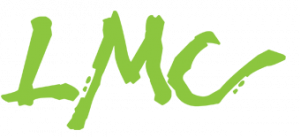
I was born in the year 1995, which (depending on which study you read) places me in Generation Z. In the year I was born, the words fashionista, bridezilla, and blog were coined, which is only fitting given that I blog for my job. You probably don’t see a lot of content penned by Generation Z in your newsfeeds, so let me introduce the newest generation. Greetings from Generation Z! My name is Elizabeth, and I am a Digital Strategy Consultant at Laura Mitchell Consulting.
I have to say that I’ve felt a bit neglected by the “generations at work” gurus hired by large corporations. They analyzed the working habits and values of those currently employed, and put all their focus on the Silent, Boomer, X, and millennial generations. Why are companies treating millennials as though they are brand new? Why aren’t they ready for us?
When I arrived for my first day at my first “big girl” job out of college, I was honestly horrified. At orientation, I was handed a large packet of paper and seated in a conference room in front of an archaic (five-year-old) PowerPoint slide deck. Then I was escorted through rows and rows of grey cubicles right to my equally grey cubicle. At this cubicle, I was greeted by the sight of a battered, five-year-old Dell brick that would make my life miserable for the next six months.
Serving as borderline IT support for my entire floor for the remainder of my time at this corporation, I came to an astonishing realization: these people have no idea what to do with me. Like the Gen Z stereotype says, I have a better understanding of most things related to computers than most of the management team, and my supervisor asked me to help her figure things out. Yet, because I was young, I was treated like an intern. In fact, I kept a running tally of how many times I was asked when my internship ended. (It was four times, if you were wondering.)
That’s why I decided to seek employment at a more progressive, creative, forward-thinking company. I even turned down job offers at significantly higher salaries for the opportunity. I’m Generation Z. I’m a digital native. When you hire me to do social media for your business, you’re hiring a native digitized speaker.
So, who is Generation Z?
We’re people who grew up in the wake of 9/11 and came of age during the 2008 economic crisis. We avoid advertising like the plague, but we’re experts on personal branding. We have no interest in playing by your rules, because we’re too busy writing our own rules. We are realistic, future-fearing, financially responsible, privacy protecting, technically savvy versions of our millennial older siblings and parents. We demand more from our schools, employers, and businesses than the generation that came before us. We question the status-quo, and are reluctant to settle for anything less than what fulfills us. Social media is our stomping ground, but even there we find our own platforms that were designed for and many times by us.
It’s difficult to market to a group of people who seem to be hiding in the shadows, with traits and cultural values that, in some ways, have yet to be determined.
So, how do I market to Generation Z?
- Use platforms in a way that isn’t foreign to your target market
Use social media platforms in a way that makes sense to the market that you’re trying to reach. Get a guide who can tell you what is cool these days. Is it Snapchat? Is it Twitter? Instagram? Make sure you stay current, because it’s a rapidly moving target and varies greatly depending on the generation that you wish to attract.
- Humanize your marketing strategy
We’re people, not Nielsen statistics! We grew up with mute buttons and fast forward. We see advertising as annoying and pervasive, we’re resistant to most traditional marketing tactics. Treat us like human beings and you will see a very positive engagement from our generation.
- Market to our niche lifestyle choices, not our demographics
Yes we are young, but we care about a lot of the same things that you do. The presence of connected technologies in our lives means that we’re less likely to conform to mainstream expectations, but we want to feel known. For every interest, belief, and hobby that we have, no matter how bizarre, we have a supportive community of peers who believe, discuss, and do the same things that we do. If you want to gain our attention, you must market to our lifestyles.
For more information on marketing to Generation Z, contact me at Laura Mitchell Consulting, elizabeth@lmcllc.us or (888) 767-9493 x701.




 If you write it, they will come. Or wait, they probably won’t, unless you’ve devised a compelling scheme to MAKE them notice. So, how do you get attention in today’s media-saturated and ADD digital world? Use these 6 tips to generate more buzz around your company press releases:
If you write it, they will come. Or wait, they probably won’t, unless you’ve devised a compelling scheme to MAKE them notice. So, how do you get attention in today’s media-saturated and ADD digital world? Use these 6 tips to generate more buzz around your company press releases: